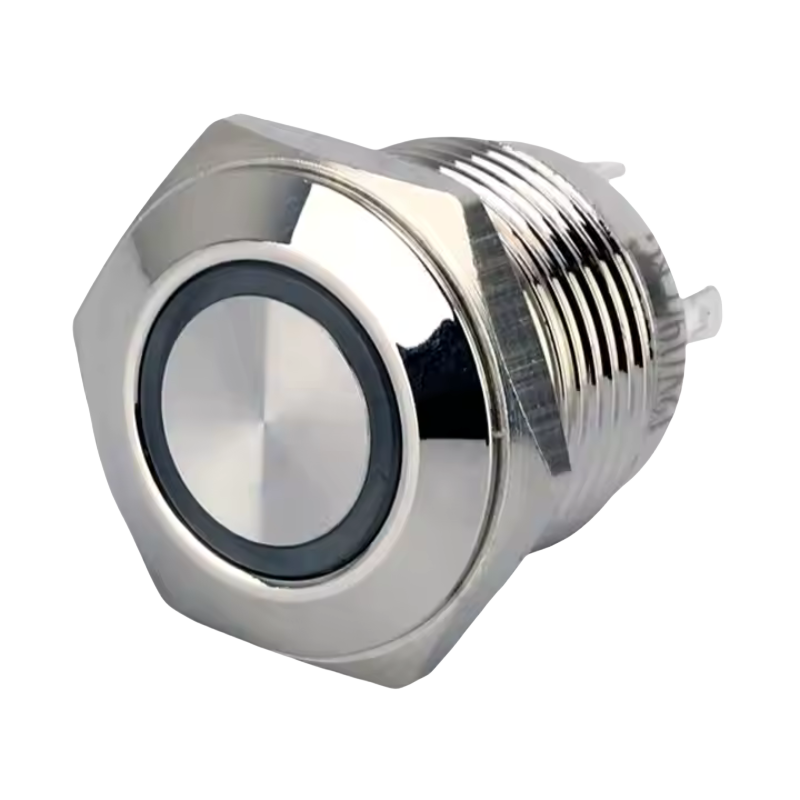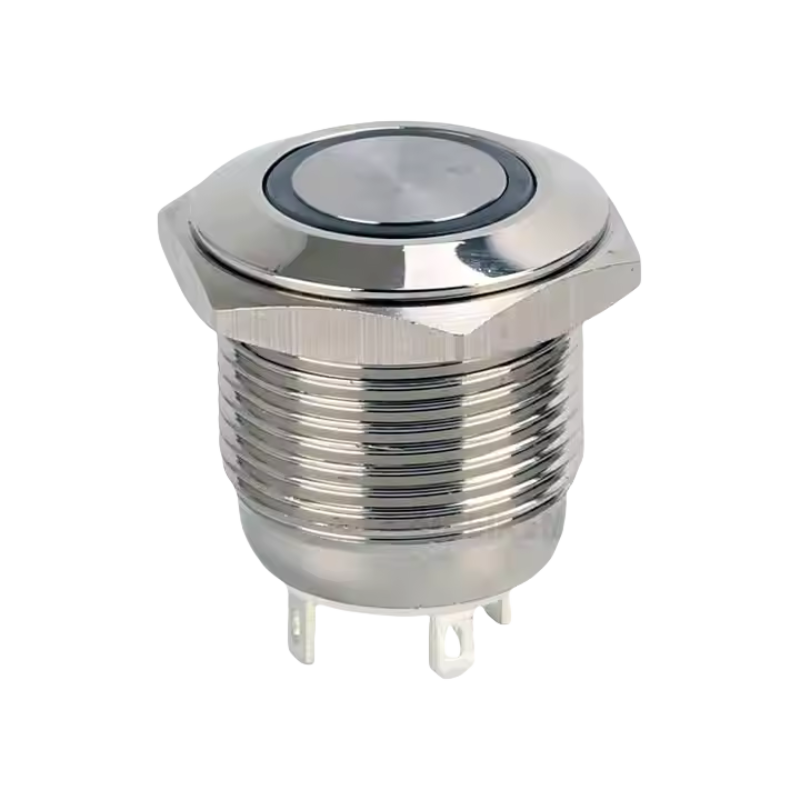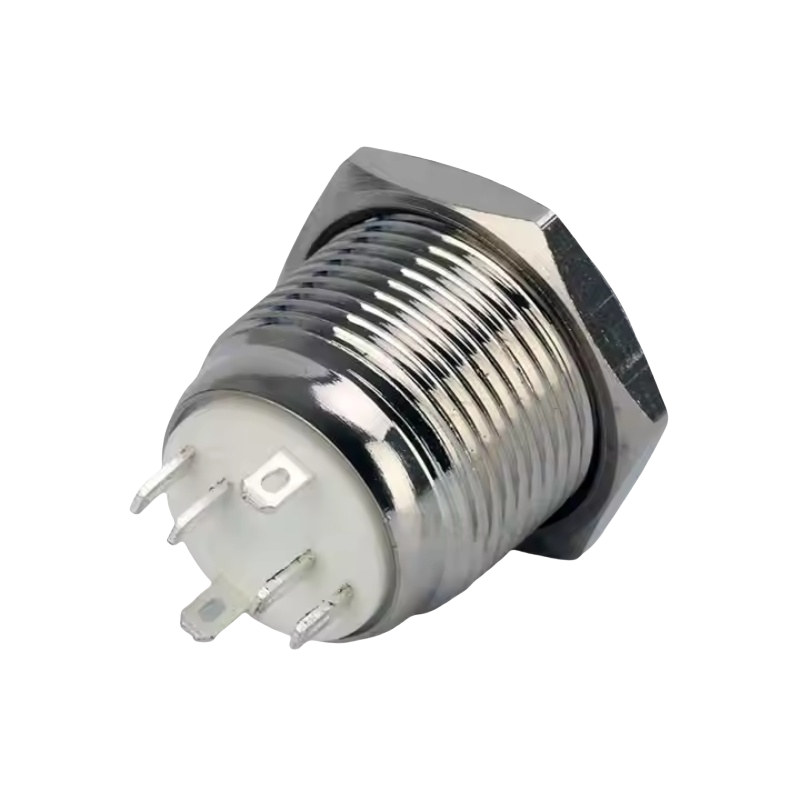In modern electrical and electronic systems, switches are among the most fundamental components. They allow users to control the flow of electricity with precision and reliability. Among various types of switches, metal push button switches have become a popular choice across many industries due to their durability, performance, and professional appearance.
This article provides an in-depth look at metal push button switches — what they are, how they work, the different types available, and where they are commonly used. Whether you’re an engineer, a product designer, or someone looking for reliable switching solutions, this guide will help you understand why metal push button switches are widely trusted in both industrial and consumer applications.
What Is a Metal Push Button Switch?
A metal push button switch is an electromechanical device enclosed in a metal housing that allows the user to open or close an electrical circuit by pressing a button. The body is typically made from durable materials such as brass, aluminum, or stainless steel, offering superior mechanical strength compared to plastic alternatives.
These switches are often mounted on panels or control boxes and can be found in environments ranging from heavy industrial machinery to home automation systems. Their robust construction makes them suitable for applications requiring long-term use and resistance to wear and environmental stress.
How Do Metal Push Button Switches Work?
The operation of a metal push button switch depends on its design. It can either be a momentary switch, which only activates while being pressed, or a latching switch, which toggles between ON and OFF states with each press.
Momentary Operation
In a momentary switch, the circuit changes state only when the button is pressed. When released, it returns to its original position. These switches are further classified into:
- Normally Open (NO): The circuit is open until the button is pressed.
- Normally Closed (NC): The circuit is closed until the button is pressed.
Momentary switches are commonly used in emergency stop buttons, reset functions, and start triggers.
Latching Operation
A latching switch remains in the ON or OFF position after being pressed. It requires another press to change the state. This type is useful in applications where continuous activation is needed without holding the button down.
Structure and Components
Understanding the internal structure of a metal push button switch helps explain its reliability and longevity. Here are the main parts:
- Metal Housing: Provides protection and structural support. Made from corrosion-resistant metals like stainless steel or brass.
- Button Cap: The part pressed by the user. Available in different shapes and colors for identification purposes.
- Actuator Mechanism: Moves inside the switch when the button is pressed, activating the contacts.
- Terminals / Pins: Electrical connection points. Common configurations include 2-pin, 3-pin, and 6-pin setups.
- Internal Contacts: Conductive parts that open or close the circuit. Often made from silver or gold-plated alloys.
- Spring System: Ensures tactile feedback and returns the button to its original position after release.
- LED Indicator (Optional): Some models include built-in LED lights to indicate the switch status visually.
Types of Metal Push Button Switches
There are several variations of metal push button switches designed to meet different functional and environmental requirements.
By Function
- Momentary vs. Latching: As explained earlier, these define how the switch behaves when pressed.
- Normally Open (NO) vs. Normally Closed (NC): Determines the default state of the circuit.
By Illumination
- Illuminated Switches: Feature LED indicators to show whether the circuit is active.
- Non-Illuminated Switches: Simple on/off functionality without visual status indication.
By Mounting Style
- Flush Mount: The button sits level with the panel surface.
- Raised Button: Protrudes slightly for easier access and visibility.
By Environmental Protection
- Waterproof & Dustproof Models: Rated with IP codes such as IP65, IP67, or IP68 for use in harsh environments like outdoor installations or food processing plants.
By Multi-Function Design
- Multi-Contact Switches: Combine multiple switching functions into one unit for complex operations.
Common Applications
Thanks to their rugged build and versatile design, metal push button switches are widely used in various fields:
Industrial Equipment
Used in control panels, emergency stop buttons, conveyor systems, and CNC machines. Their ability to withstand frequent usage and vibration makes them ideal for factory settings.
Automotive Industry
Found in vehicle dashboards, off-road equipment, and auxiliary control systems. Used to manage lighting, wipers, power windows, and other vehicle functions.
Medical Devices
Employed in diagnostic tools, patient monitoring devices, and surgical equipment where accuracy and sterility are crucial.
Security Systems
Integrated into alarm systems, intercoms, and access control panels. Often used for door entry systems and biometric verification stations.
Marine and Outdoor Use
With waterproof designs, these switches are suitable for boats, yachts, and outdoor lighting systems exposed to moisture and saltwater.
Home Automation
Used in smart thermostats, audio/video control panels, and high-end kitchen appliances for a premium interface.
DIY Electronics
Popular among hobbyists and makers for robotics, model trains, custom-built electronics, and embedded systems.
Why Choose a Metal Push Button Switch?
Compared to other types of switches, metal push button switches offer several advantages:
Durability
Built with strong metal housings, they resist impact, corrosion, and wear better than plastic alternatives.
Longevity
High-quality models can endure hundreds of thousands of actuations, ensuring long-term reliability.
Professional Appearance
Their metallic finish gives a polished and industrial look, making them suitable for commercial and high-end consumer products.
Tactile Feedback
The spring-loaded mechanism provides clear physical feedback, allowing users to feel when the switch has been activated.
Customization
Available in multiple sizes (commonly 12mm, 16mm, 19mm, and 22mm), colors, and illumination options.
Environmental Resistance
With proper sealing, they can operate reliably in extreme conditions including dust, moisture, oil, and temperature fluctuations.
How to Select the Right Metal Push Button Switch
Choosing the appropriate switch depends on your specific application needs. Consider the following factors:
Voltage and Current Rating
Ensure the switch supports the voltage and current required by your system. Ratings typically range from 3V to 250V and 0.5A to 10A or more.
Environmental Conditions
If the switch will be exposed to moisture, dust, or chemicals, choose a sealed version with an appropriate IP rating.
Illumination Requirements
Determine whether you need an illuminated switch with LED indicators for better visibility.
Switch Type
Select between momentary, latching, NO, NC, or dual-function models based on your operational needs.
Size and Mounting Options
Confirm the switch size matches the panel cutout dimensions. Common diameters are 12mm, 16mm, 19mm, and 22mm.
Terminal Configuration
Choose the correct number of terminals (2-pin, 3-pin, 6-pin, etc.) depending on wiring complexity.
Color and Labeling
Color-coded caps or engraved markings can help identify functions quickly, especially in control panels with multiple switches.
Installation Tips
To ensure safe and effective use, follow these installation guidelines:
- Turn Off Power Before Installation
Always disconnect the power supply before connecting or replacing a switch to prevent electric shock or damage. - Use Proper Tools
Ensure you have the correct screwdrivers, wire strippers, and crimping tools for secure connections. - Follow Wiring Diagrams
Refer to the manufacturer’s instructions or datasheet to connect the terminals correctly. - Secure All Connections
Make sure wires are tightly fastened and insulated to avoid loose contacts or arcing. - Test the Switch After Installation
Verify that the switch operates properly and that any LED indicators respond correctly. - Check for Sealing Integrity
For outdoor or wet-area installations, ensure the switch is fully sealed and protected from moisture.





